Long Eaton - West Park
w/e 01 October 2017
All of this week's pictures were
taken with a Kodak DX6490

Part 04 - Includes Trees 23 to 30
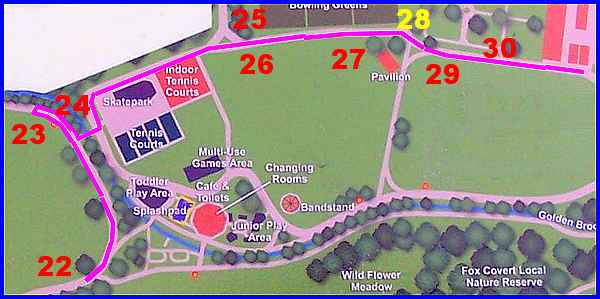
This final part of the Tree Trail takes us from near tree number
22 and proceeds through to the end beyond number 30. As I pointed
out in Part 03, there are some differences between the original
leaflet detailing the walk and the updated version but as I started
with it, I am sticking with the original for the purposes of
this series. The tree at position 28 however (highlighted above)
has been omitted from the later version and is no longer there.
It was listed as being a Tree Sculpture by artist Andrew Frost
who had turned a Black Poplar into a "magical sculpture
in 2002" following severe damage caused by storms.
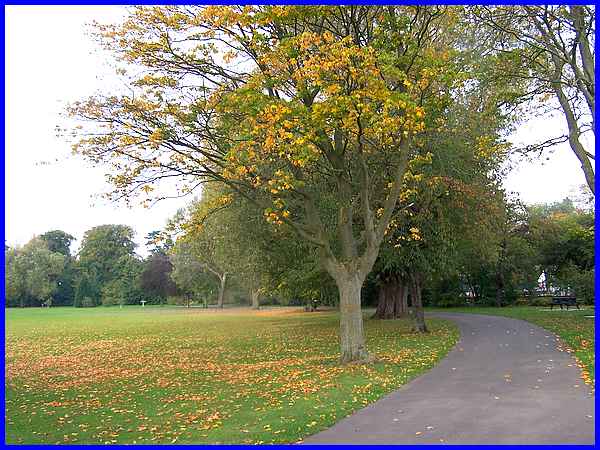
We picked up the Trail again near the Cappadocian Maple (just
off shot to the left) and followed the path round to the conical
shaped tree that can just be made out in the distance towards
the left of the picture.
|
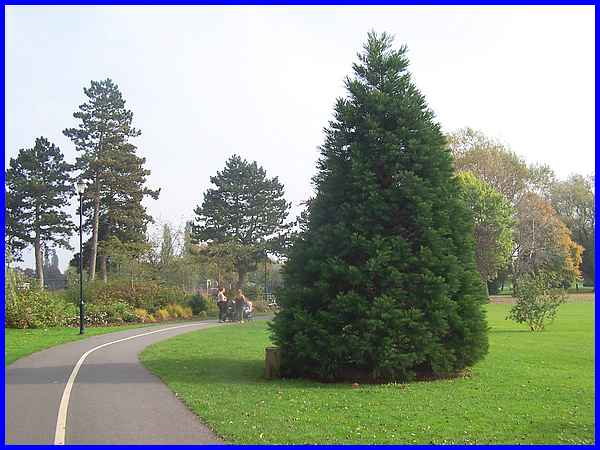
That conical tree is a Wellingtonia but it was a little confusing
as the leaflet states it "is the largest tree in the world"
and " can grow up to 80m tall and live for 3000 years."
This specimen is obviously not as tall nor as old as that but
is a member of the Californian Redwood family where the largest
tree is known as General Sherman measuring 31m around its trunk.
|
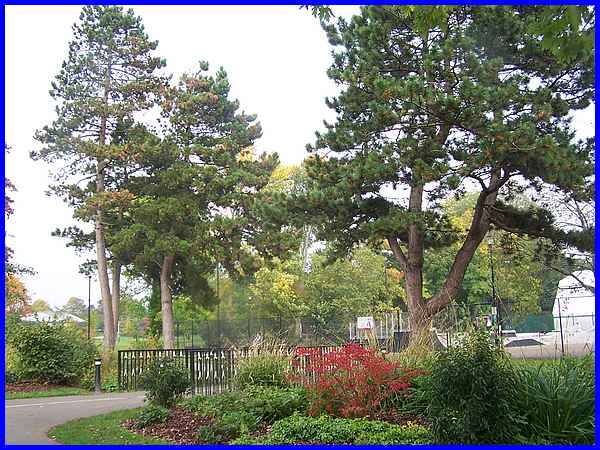
Doubling back to cross the bridge over the Golden Brook, the
next tree at position 24 is listed as a Scots Pine and although
there was no identification post, it looks to me as though there
is more than one specimen.
|
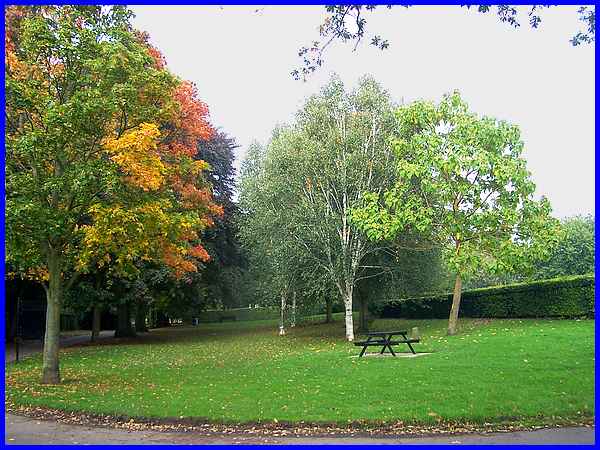
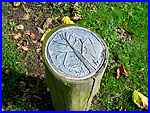 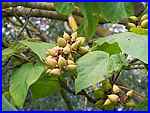 We continued round
the path to another path leading to King Street where the next
tree on the Trail is a Foxglove. It has large seed pods (right)
at this time of year and is also known as a Princess or Empress
Tree. In China it was customary to plant one when the Empress
gave birth to a child. In this picture it is the one on the right
with the identification post (left) visible between the picnic
table and the tree. We continued round
the path to another path leading to King Street where the next
tree on the Trail is a Foxglove. It has large seed pods (right)
at this time of year and is also known as a Princess or Empress
Tree. In China it was customary to plant one when the Empress
gave birth to a child. In this picture it is the one on the right
with the identification post (left) visible between the picnic
table and the tree.
|
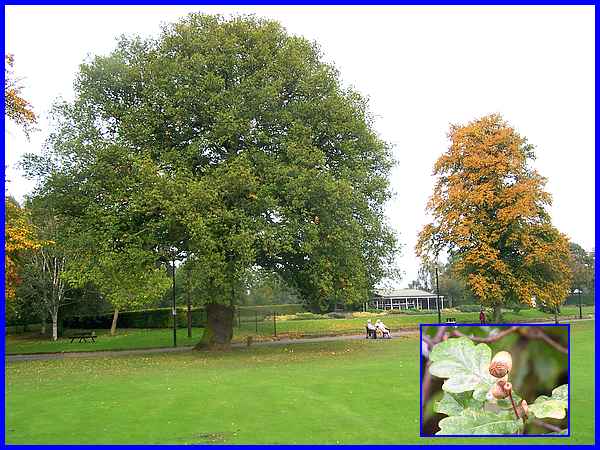
Next is the more rounded shape and sight of a Common Oak and
although it is more familiar to most people than the Foxglove,
this particular tree had very few acorns on its branches and
there were none on the ground that I could see either.
|
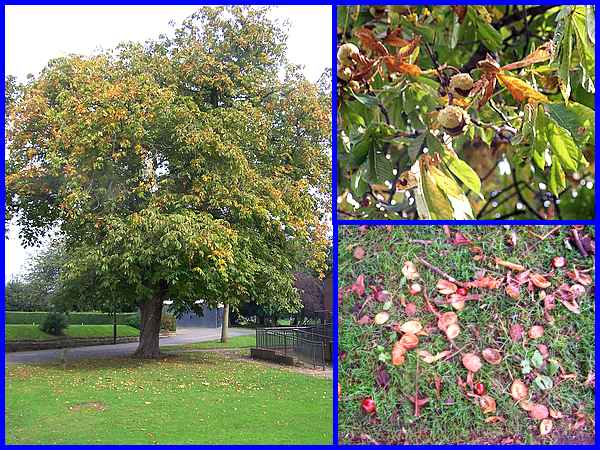
At number 27 there is another familiar tree and the opposite
of the oak was true. The ground was littered with conkers and
standing under the Horse Chestnut was a precarious thing to do
as more were dropping from the branches and bouncing on the path.
Conkers are also known by other names including cheggies or obblyonkers
and can be eaten by cattle and deer but are not for human consumption.
|
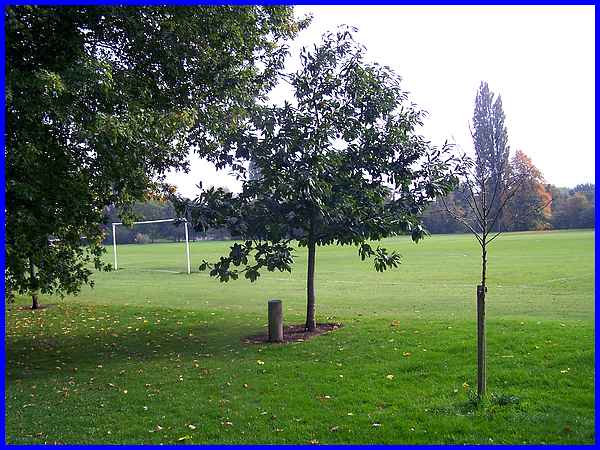
Another Chestnut, this one a Sweet Chestnut stands nearby close
to a football pitch. The fruit of the Sweet Chestnut is edible
by humans and are often roasted or used in chestnut stuffing
at Christmas. The British climate however is not warm enough
to ripen the nuts and most of those on sale in the shops are
imported from France and Italy.
|
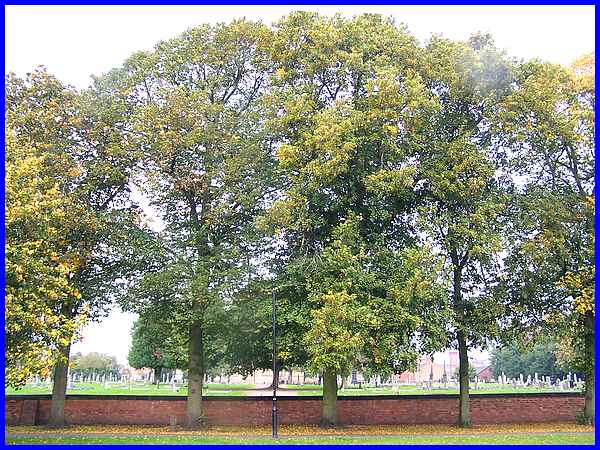
The final identification post on the Tree Trail at position 30
stands by a Common Lime (second from left) in a line of trees
along the wall that separates the park from Long Eaton Cemetery.
Common Limes can grow to a height of about 30m and are the tallest
broadleaved trees to be seen in Britain.
|
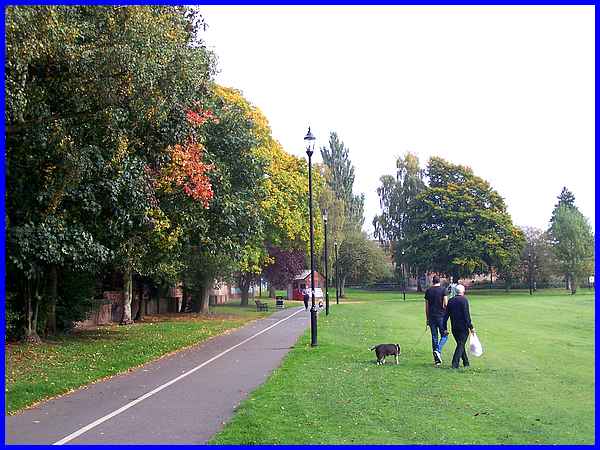
Having concluded the Tree Trail we continued on the path by the
cemetery wall to exit the park near the centre of Long Eaton.
|
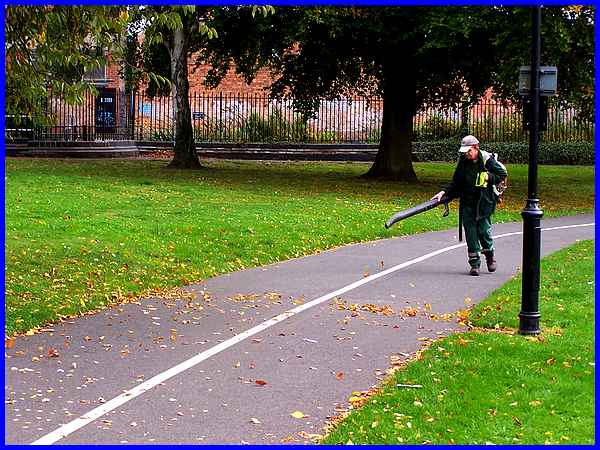
On the way we passed a man who will surely be kept busy for the
next few weeks blowing leaves from the path. Not so much a labour
in vain but with the leaves only just starting to fall from the
trees, there will be plenty more to come before autumn is over.
|

